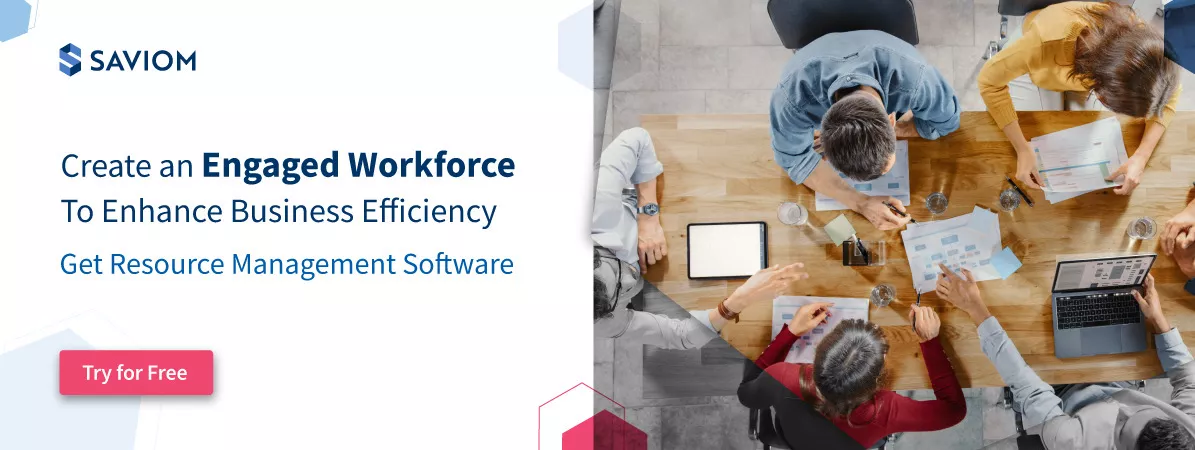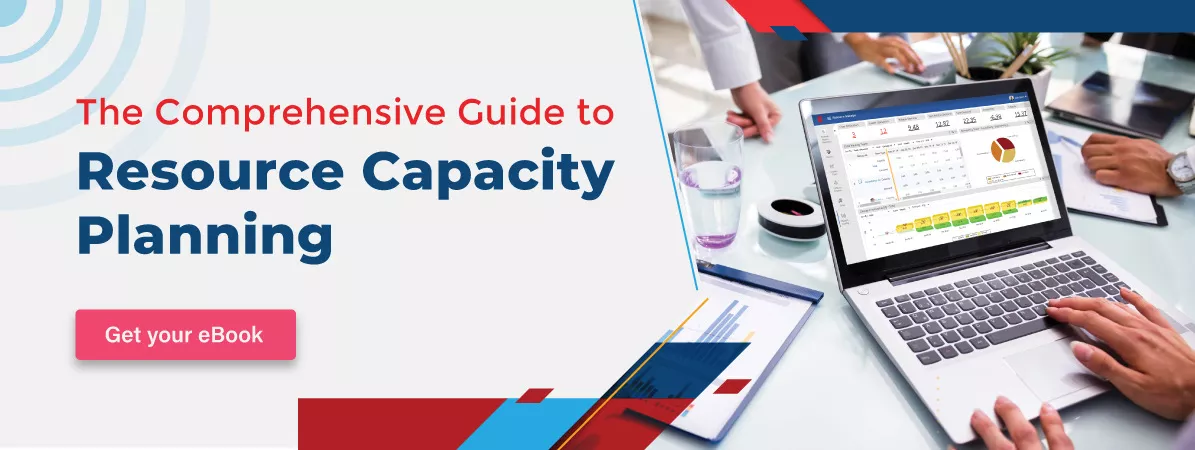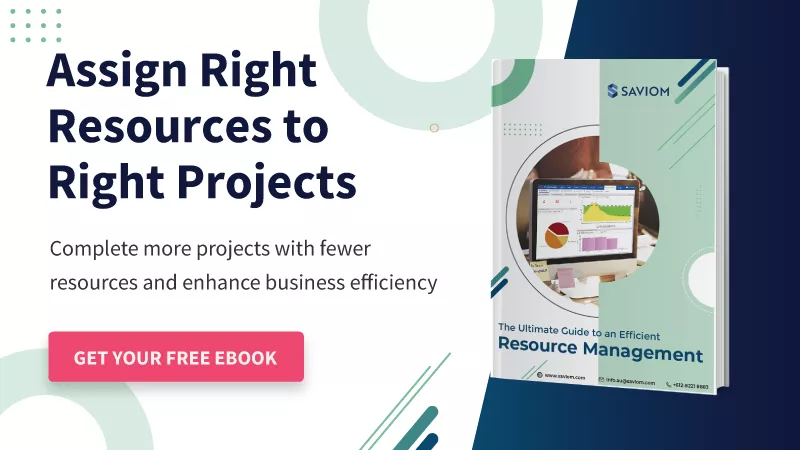The organizational landscape has witnessed a paradigm shift in the past decade. The work culture has evolved to be more employee-centric. Firms started taking active measures to elevate retention, employee satisfaction, engagement, and more. This did not only cater to employees’ needs but also contributed to the firm’s competitive advantage.
In fact, a study reveals that companies with a highly engaged workforce are 21% more profitable
Thus, employee engagement has gained immense popularity over the years, even due to the global pandemic that mandated work from home. It has changed most industries’ workplace dynamics, and thus, companies are facing newer challenges in keeping employees actively engaged.
However, it observed that organizations with a highly engaged workforce deliver exemplary customer service and greater operational efficiency. Besides, they have a positive cognitive, behavioral, and emotional connection with their work and workplace.
This Survey by Gallup states that 62% of Highly Engaged employees feel that their work positively affects their physical health compared to 22% of Actively Disengaged employees.

Thus, enhancing employee engagement is the need of the hour. This article will explore its’ basics, how the trends have changed, and how to keep your employees engaged in today’s corporate scenario.
What is employee engagement, and why is it important?
It is the ability with which an employee feels present, focused, and energized at workplace. As a result, both the employee and the employer succeed simultaneously. An engaged employee aligns their purpose with the company’s goals and understands their role’s impact on the company and co-workers.
Understanding individual wellness and providing a conducive environment go hand in hand with employee performance. Here are some reasons why employee engagement is essential –
- Engaged employees exhibit active participation at the workplace leading to enhanced team performance & productivity. When a group of engaged employees work cohesively, it also increases team morale and accountability.
- Employee engagement further translates into higher retention. Gallup reported up to 40% lower turnover rates in companies with highly engaged employees.
- Less work-related stress. Engaged employees and supportive managers are mindful, self-motivated, and thus, do not take negative work pressure.
- When these engaged employees bring in high productivity and better results, it leads to increased company revenue and profits as a direct business impact.
Read More: Ten Effective Strategies to Reduce Employee Turnover
Next comes the inevitable question – who should own employee engagement in a company?
Who is responsible for employee engagement, and how?
Every entity and individual working in the company is responsible for employee engagement, including the organization, leadership team and, every employee. So, while you can have one person in charge to oversee the engagement activities, in reality, it should be part of everyone’s goals.
Let’s take a look at what each role can do for the benefit of one and all.
The Organization
To begin with, an empowering environment is necessary for employees to feel engaged. Therefore, an organization that values engagement automatically builds an employee-friendly work culture – by creating policies, ethos, work environment, authorizations, etc.
Leadership team
Senior leaders are the powerful influencers of the firm. They are responsible for formulating policies that favor both employers and employees. Moreover, their support to reinforce these policies further ascertains engagement.
Managers
Managers form the essential bridge between the employees and the leadership team as they oversee the implementation of employee engagement strategies. They also receive feedback from the employees first hand and are in charge of resolving any issues that might come up or relay it to the respective team as required.
Employees
Eventually, it is the employees’ participation that brings in crucial growth. Communicating well and on time, providing timely feedback, seeking out the available developmental opportunities, and brainstorming with the managers on their career paths are vital for their success and the organizations.
Latest trends in employee engagement
As stated earlier, employee engagement can be a success only when all parties understand and embrace their roles. More and more employers understand the importance of having an engaged resource pool for achieving continuous success.
Let us see what the factors that define employee engagement in this age and time are.
Embracing hybrid workspaces
Although hybrid workspaces existed before the onset of the pandemic, with the COVID-19 restrictions slowly lifted, many companies are switching to the hybrid model, offering a combination of onsite and offsite working. This model offers more flexibility to employees and emphasizes work-life balance, which in turn elevates employee satisfaction and engagement.
Fostering employee-centric culture
Though this has been a growing trend, companies have accelerated the people-first approach and culture in the past few years. They explicitly value the physical and mental well-being of the employees. Firms are fostering a positive work culture and extending a plethora of wellness benefits to the employees to upkeep their engagement.
Read More: What is Workforce Planning, and How to Master it for Business Efficiency?
Practicing diversity, equity, and inclusion
Since geography was not a primary criterion, companies started hiring people across ethnicities, cultures, genders, and social structures. Such a diverse employee pool brought fresh perspectives, innovative solutions, better representation, a safer environment for women, and a greater sense of belonging. When the employees feel heard and taken care of, they are automatically engaged and driven at the workplace.
Growing use of tools and technology
Technology is the enabler in today’s business landscape. With remote work gaining impetus, the use of technology has grown exponentially. Firms are implementing tools that bring the team together on a unified platform, thus negating the feeling of isolation and encouraging team engagement.
Read More: How Resource Optimization Boosts Task Management?
We now know about the metamorphosis the workplace culture has undergone in the past years. Here’s how companies can leverage the changes to keep the employees actively engaged.
How to ensure employee engagement while onboarding?
The onboarding stage is the most crucial time for a company to make an impression on its new hires. A streamlined onboarding process can help them feel at ease, stress-free, and welcome, which in turn helps create an emotional bond with the company.
Engage early to create strong internal social connections
The thoughtfully crafted first days after joining set the new hires’ mindset for the rest of their employment. If the new employee would be working onsite, taking them for a tour of facilities, introducing them to the onsite team opens the door for team connection and garners a sense of belonging. If the employee is offsite, then carrying out the same activities over video conferencing has an identical effect. Managers can also start introducing them to the company’s cultural construct during the first few weeks conversationally or during meetings.
Organize fun icebreakers during training
Icebreakers are fun and effective in breaking awkward silences and facilitating the proceedings when the participants are unknown to each other. Trainers or facilitators can keep the sessions interactive by ensuring that all the new recruits feel comfortable, contribute and create a common sense of purpose.
Simple things like switching places or partners for every session and having communication-intensive games help with creativity, innovation, and energy boost. Asking icebreaker questions like these to the group also helps break the monotony.
- You all have one hour to live. What would you do together?
- If you had the chance to be the company’s mascot, what would you be and why?
- What would you be doing if money was not a criterion?
Read More: 7 Benefits of Virtual Team Building Activities for Remote Teams
Implement an onboarding buddy system
An onboarding buddy is a peer to the new hire who coaches and assists them during their initial weeks. Most new hires begin with general anticipation of the work, workplace culture, ethics, colleagues, etc. Thus, assigning a buddy provides them the initial support to understand all these factors better.
Managers can assign a seasoned employee who has demonstrated a clear understanding of the company’s practices, culture, and systems. They should also have exemplary communication and interpersonal skills to resolve the new recruits’ queries. . Moreover, they can ensure that the new hire has someone to talk to, feel welcome, thus accelerating their engagement.
Read More: Top 7 Business Benefits of Training Scheduling Software
A well-executed onboarding sets the foundation for the long-term success of the new hires. This has to be sustained throughout an employee’s tenure to guarantee high engagement and retention.
Here are 8 effective employee engagement drivers for long term employees
How to facilitate employee engagement for seasoned employees?
Employee engagement is particularly complex when it comes to long-term employees. There is no one solution for all. Managers have to make an effort and be watchful of employee performance. Every sign of demotivation and low morale should be recognized on time and addressed promptly.
However, preventing an employee from burnout or demotivation should be the primary focus as engaged teams bring in 17% more productivity.
Provide new opportunities to upskill them
A path of progression for a career or skillset works great in motivating employees. When they feel that the company is ready to invest in them, it boosts their morale, makes them feel valued, and increases their engagement. Upskilling and cross-skilling employees keep them prepared for diverse or multi-faceted projects, thereby decreasing the mundaneness of working in a single profile.
Thus, managers should converse with their team members, understand their aspirations and formulate Individual Development Plans (IDP) accordingly. They should follow the same approach for each employee and provide tailor-made IDPs.
Foster physical & mental well-being of employees
Companies gain a lot by prioritizing the overall well-being of their employees. Even to this day, there are stigmas attached to talking about mental health in the workplace for fear of being judged.
Organizations can take a step ahead, educate the employees about mental health and its importance, organize health sessions with experts regularly, and even create a mental health hotline for employees to reach out anonymously. When companies support the holistic well-being of the employees, not only will they perform better, they are also more likely to recommend their company as an excellent place to work.
Read More: Employee Recognition Programs: Types, Benefits and Best Practices
Make work-life balance a priority
Work-life balance is crucial for employees to upkeep their psychological and physiological health. The onus is on the organizations/managers to prioritize work-life balance and facilitate their resources with flexible schedules and other benefits that can help strike this synergy. It helps them do justice for their work and personal lives by being a high performer at work while taking some time out for self-rejuvenation.
Companies can offer employee assistance programs like flexible working, gym memberships, crèche facilities for working mothers on the office premises, etc. Additionally, managers can encourage employees to take timely breaks, focus on productivity rather than hours, and regularly review their workloads to avoid overwork. When employees have enough time to recharge, it increases their attention span and energy levels, thereby enhancing engagement and productivity.
Give importance to hobbies & recreation
A large number of people tend to stop pursuing their hobbies as the workload increases over the years. When opportunities for such pursuits are provided, the companies are seen to celebrate life beyond work. This naturally uplifts the workforce’s spirits and motivates them to do better at the workplace.
Organizations can hold classes for various hobbies, organize sports tournaments, competitions, and other outdoor activities like hiking, trekking, camping, and reinforce team level engagement activities like team outings, themed dress-up, etc. If the offices are still into remote working, virtual team-building activities can be conducted like Bingo, murder mystery, remote scavenger hunt, virtual wine tasting, Pictionary, etc.
Read More: The Art of Resource Planning Across Multiple Projects
Offer diverse projects to the workforce
Often long-term employees start feeling the boredom from monotonous projects, admin work, etc. This can lower their engagement and productivity, and even lead to unplanned absences since they have nothing to look forward to at the workplace.
Companies can proactively take preventative measures by breaking siloed structures and forming cross-functional teams instead of hiring new workforce from external channels. This will allow employees to take on multiple endeavors and diversify their portfolios. Naturally, when the resources’ interests are taken care of, they feel the company provides them a platform to showcase their capabilities, which keeps them engaged.
Facilitate real-time rewards and recognition
Appreciations, rewards, and recognitions all positively impact employee motivation, productivity, and engagement by reinstating the fact that their performance is noted and they are a valuable addition to the firm.
With a continuous appraisal system, employees can work on their shortcomings ahead of time and start upskilling themselves for future projects. Companies can build a culture of positive reinforcement by rewarding with small but meaningful gestures like reward points, appreciation emails, etc.
Read More: What is Employee Performance Management and Why It is Important
Take feedback through employee surveys
Employee Assistance Programs, hobby clubs, mental health hotlines help treat the symptoms and not the root cause of disengagement. Employee surveys – both pulse and annual – help identify the needs of employees that would help them thrive at work. It also gives the companies an opportunity to improve their work practices, amend the culture if needed, address pressing concerns, etc.
These surveys should be kept short, precise, and confidential. The option to share responses anonymously or non-anonymously can also garner more honest insights from employees. These practices provide a safe space for the workforce to voice their concerns, make them feel heard, and thus, keep them engaged.
Ensure your tech minimizes the mundane tasks
Many of the necessary but mundane tasks, like administrative work, can be automated, which frees employees’ time to focus on more critical assignments such as billable and strategic work. In addition, companies can deploy technology and enable self-service for routine tasks like leave scheduling, raising IT tickets, streamlining payrolls, answering polls, etc.
89% of employees say that when repetitive routine tasks are streamlined through automation, it makes them more efficient.
Thus, taking admin and routine tasks out of the equation offers more time to employees to work on critical, creative, and other human-specific tasks, eventually enhancing their engagement.
Read More: Resource Management: A Comprehensive Handbook for Project Managers
Out of the many tools, implementing a resource management solution can enable managers to promote employee engagement. Here’s how,
How can Resource Management help enhance employee engagement?
Resource management allows multidimensional scheduling and competent resource allocation, which enables managers to tap into the maximum potential of the workforce.
It gives you 360-degree visibility of the resource pool, and the managers can view the skills, experience, capacity, availability, etc., of the resources. This way, they can ensure that the right resources are working on the right projects. Besides, when employees work on tasks in line with their interests and skills, it automatically engages them.
Moreover, managers can track utilization rates of resources in real-time and determine if a resource is overwhelmed or not. Further, they can optimize their schedules with optimizing tactics such as resource leveling and smoothing. It also allows you to keep overutilization in check and negate burnout. When employees’ stress levels are at a minimum, they are more active and productive at the workspace.
Not just that, the resource management tool also allows employees to show interest in open positions matching their skillset and availability. Following that, the resource managers can consider them while proposing the best fit resources for the project. Following this, they can validate and book them using the same platform. It also helps in improving task ownership from the employees’ end.
These practices make employees feel valued as their competencies are utilized to the maximum extent while considering their mental health, thus enhancing their engagement.
Read More: Getting Resource Leveling Right for Projects
Conclusion
Employee engagement is complex but necessary for sustaining an optimized and motivated workforce. Thus, organizations must take necessary steps to ensure that their workforce is engaged, as it up keeps their well-being and elevates productivity and profitability. The strategies mentioned above will help you achieve the same efficiently.
What strategies do you employ to keep your team engaged?
The Glossary
Read More: Glossary of Resource Workforce Planning, Scheduling and Management
SAVIOM Solution
SAVIOM is the market leader in helping multinational clients manage their resources efficiently and effectively. With over 20 years of experience, this Australian-based MNC has a global presence across 50 countries and has helped 100+ clients with their Workforce Planning Software. Saviom also provides tools for Enterprise Project Resource Management, Project Portfolio Management, and Professional Service Automation. Re-engineer employee engagement in your organization with Saviom.






